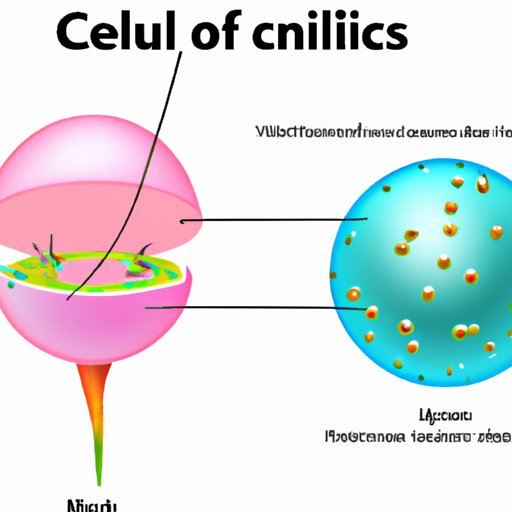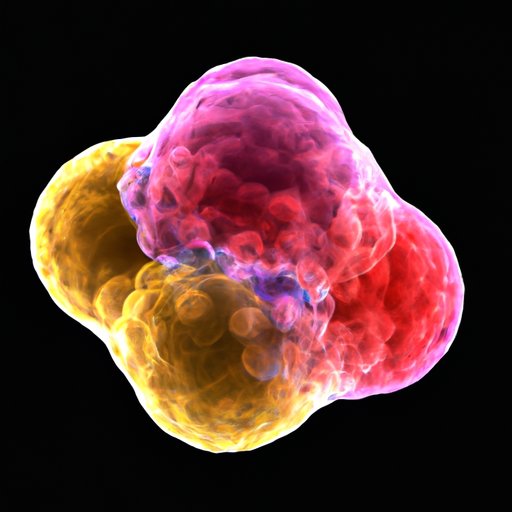I. Introduction
The nucleolus is an organelle found within the nucleus of eukaryotic cells. Its primary function is to help in the synthesis and assembly of ribosomes, which are crucial for protein synthesis. However, the nucleolus has many other complex functions that play a vital role in various cellular processes, including gene expression, cell division, genome stability, and cellular homeostasis. Therefore, understanding the functions of the nucleolus is essential in comprehending the complex processes that happen in our cells.
II. Discovering the Crucial Role of Nucleolus: Unraveling its Intricate Functions in Protein Synthesis
Protein synthesis is a vital process that occurs in every cell of the body. It involves the conversion of mRNA (messenger RNA), which carries genetic information from DNA to ribosomes, where it is translated into protein. The nucleolus plays a crucial role in this process by synthesizing ribosomal RNA (rRNA), which combines with proteins to form ribosomes, the cellular machinery responsible for protein synthesis.
Several studies have shown that the nucleolus’s disruption leads to abnormal ribosome biosynthesis, which can cause severe health problems such as cancer, neurodegenerative diseases, and developmental disorders. Moreover, cancer cells exhibit increased nucleolar activity compared to normal cells, indicating the crucial role of the nucleolus in cancer development and progression.

III. The Nucleolus: The Brain of the Cell that Controls Genetic Expression
Genetic expression refers to the biological process by which genes are transcribed and translated to produce proteins that carry out specific functions in the cell. The nucleolus plays a crucial role in this process by controlling the activity of RNA polymerase I, a critical enzyme responsible for transcribing ribosomal RNA. In addition to this, the nucleolus also regulates the activity of several transcription factors, which influence the transcription of genes involved in various cellular processes such as cell cycle regulation, oxidative stress response, and DNA damage repair.
Recent studies have also shown that the nucleolus acts as a sensor of cellular stress, activating various mechanisms that modulate gene expression to maintain cellular homeostasis and prevent diseases such as cancer, aging, and neurological disorders.
IV. From Ribosomal Synthesis to Cell Division: Understanding the Multifaceted Functions of the Nucleolus
Besides its role in protein synthesis and genetic expression, the nucleolus also plays a critical role in other cellular processes such as ribosomal synthesis and cell division.
The nucleolus produces ribosomes, which are crucial for protein synthesis, and its disruption can lead to faulty ribosomal biosynthesis, resulting in protein synthesis defects that can cause various diseases such as anemia and leukemia.
Additionally, the nucleolus is involved in cell division, playing a vital role in the formation of the nucleolus organizer region (NOR), which determines the number and size of nucleoli present in newly formed cells.
V. The Nucleolus: A Complex Organelle with Essential Functions in Genome Stability and Cellular Homeostasis
Genome stability and cellular homeostasis are essential processes that ensure the proper functioning of cells and prevent the development of diseases such as cancer, aging, and neurodegenerative disorders. The nucleolus plays a crucial role in maintaining genome stability and cellular homeostasis by participating in various cellular processes such as DNA repair, cell cycle regulation, and stress response.
Studies have shown that the nucleolus protects the genome by interacting with DNA repair factors and regulating the activity of cell cycle regulators such as p53. Moreover, the nucleolus responds to various stresses such as oxidative stress and nutrient deprivation by activating stress response pathways such as the mTOR and p53 pathways, which modulate gene expression and cellular metabolism to maintain cellular homeostasis.
VI. Nucleolus Unveiled: Key Molecular Mechanisms That Regulate Cell Survival and Proliferation
Cell survival and proliferation are critical processes that ensure the proper growth and functioning of cells. The nucleolus plays a crucial role in regulating these processes by interacting with several molecular pathways such as the mTOR pathway and the p53 pathway.
In response to cellular stress such as nutrient deprivation and DNA damage, the nucleolus activates the mTOR pathway, which regulates cellular metabolism and protein synthesis to maintain cellular homeostasis. Moreover, the nucleolus also interacts with the p53 pathway, which regulates cell cycle arrest and apoptosis in response to DNA damage and other stresses.
VII. The Nucleolus: A Dynamic Organelle that Governs Gene Expression, Cancer Progression, and Aging
The nucleolus plays a crucial role in several processes that are crucial to our health, including gene expression, cancer progression, and aging. Its disruption can lead to various diseases such as cancer, neurodegenerative disorders, and developmental disorders.
The nucleolus interacts with various molecular pathways to regulate gene expression, including the mTOR pathway, which plays a crucial role in cancer progression, and the p53 pathway, which regulates cell survival and proliferation. Moreover, the nucleolus is also involved in aging, with studies indicating that its disruption is linked to several age-related diseases such as Alzheimer’s and Parkinson’s disease.
VIII. Nucleolus at the Heart of the Cell: Unraveling the Intricacies of its Role in Protein and RNA Processes
Protein and RNA processes are critical cellular processes that ensure the proper functioning of cells. The nucleolus plays a vital role in these processes, with several studies indicating that its disruption can lead to various diseases such as cancer and developmental disorders.
The nucleolus synthesizes ribosomal RNA, which combines with proteins to form ribosomes, the cellular machinery responsible for protein synthesis. Moreover, the nucleolus also plays a crucial role in RNA processing, including the synthesis of small nuclear RNA (snRNA) and transfer RNA (tRNA), regulatory RNA that plays a vital role in gene expression and cellular metabolism.
IX. Conclusion
The nucleolus is a critical organelle found in the nucleus of eukaryotic cells that plays a vital role in several cellular processes, including protein synthesis, genetic expression, cell division, genome stability, and cellular homeostasis. Its disruption can lead to various diseases such as cancer, neurodegenerative disorders, and developmental disorders. Therefore, understanding its functions is crucial in comprehending the complex processes that happen in our cells, and further research on the nucleolus may lead to the development of new therapies for several diseases.
Therefore, more research is needed to further understand the intricate functions of the nucleolus and how its disruption can lead to the development of various diseases. Understanding the nucleolus’s functions is an essential step in developing new therapies and treatments for diseases such as cancer, neurodegenerative disorders, and developmental disorders.
